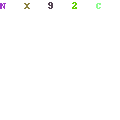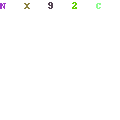One of the key technologies now hitting the CCTV market is software that recognises unusual behaviour and alerts a security team.
Unusual behaviour can be some think like running in a shopping centre when everybody else is walking, or seeming to hang about in a area when everybody else is walking around.
In such systems, which are brought to the market by Havant-based Smart CCTV, the real time image is only flashed on the screen when the person’s behaviour is outside the computers parameters, allowing the CCTV operator to make a judgement call – whether to investigate further or not.
Managing Director Nick Hewitson said: “The technological development have been driven by the realisation that the way it has always been done isn’t very effective. People sitting in front of a screen lose the ability to concentrate if they are staring at the same boring screen all day. They don’t become very effective halfway through the day. Now technology has taken that weight from them.
‘Two years ago that technology wasn’t there.”.
But he insists the world is no more dangerous now that it was at the height of the IRA terror campaign.
Fear of terrorism means big moeny for secuirty firms, reports Jeremy Dunning.
---------------------------------------------
© Smart CCTV Limited 2006 – All right reserved. For more information on Smart CCTV Limited please visit our web site: www.smartcctvltd.com - Published by: Ross Burrows

